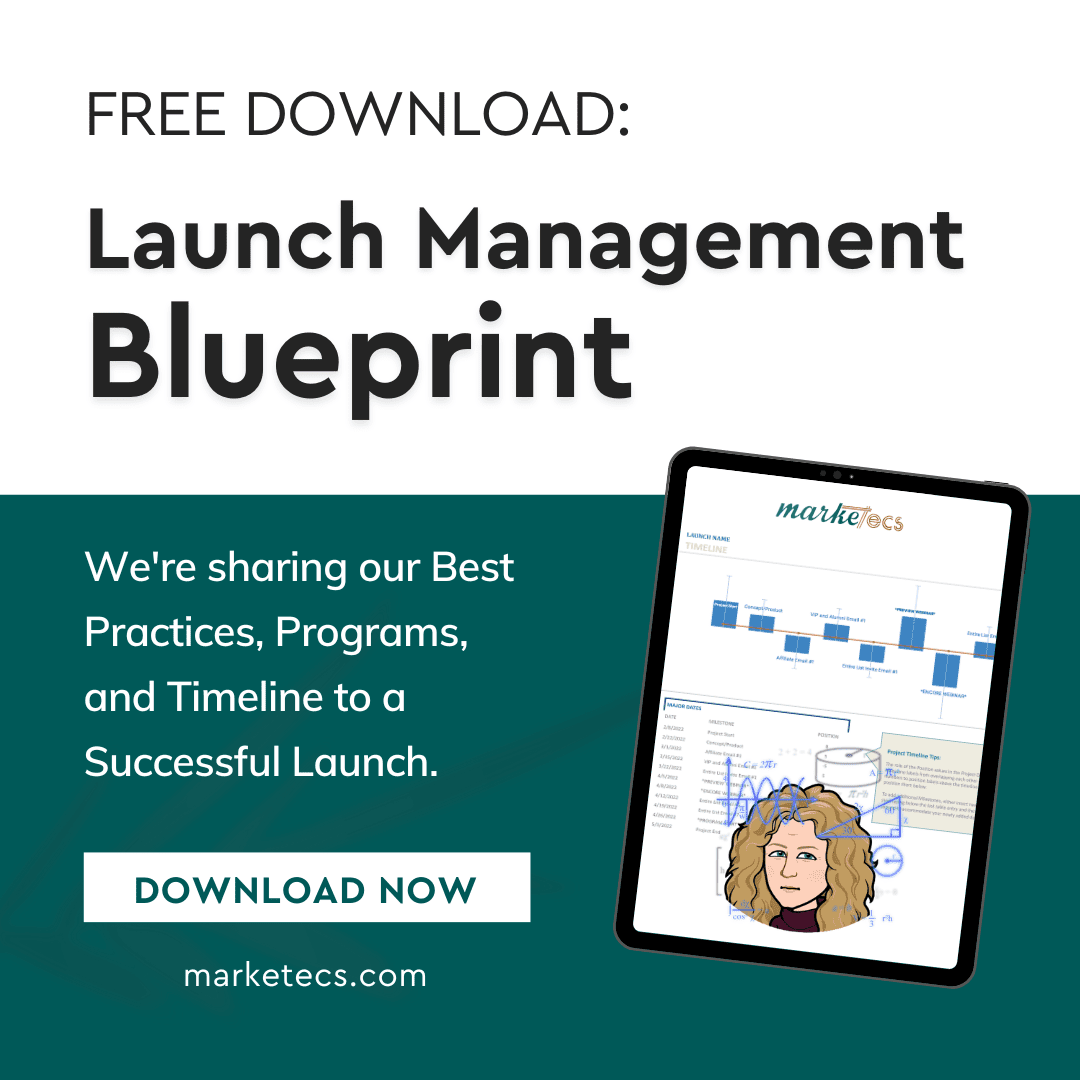What’s in this article:
- Sales funnels, explained
- Why you need a sales funnel
- Start with the end in mind…
- 3 simple steps to building your funnel
- How to optimize any sales funnel
As an established consultant, you’ve likely built a wealth of experience and developed a strong reputation in your field.
However, scaling your business and consistently attracting high-value clients often remains a challenge. This is where sales funnels come into play.
For consultants, a well-structured sales funnel can automate much of the client acquisition process, allowing you to focus on delivering value – while your marketing works behind the scenes to bring in the new prospects you need to fill your pipeline and grow your biz.
In this article, we’ll walk you through the essentials of sales funnels and how you can implement them to streamline your business growth.
What Is a Sales Funnel?
A sales funnel is a strategic, step-by-step process that guides potential clients from the initial stage of awareness to the final stage of making a purchase or booking a service. Think of it as a journey for your prospects, where each stage nurtures them with valuable information, builds trust, and moves them closer to becoming paying clients.
As Neil Patel, a leading digital marketing expert, says:
“A sales funnel is the backbone of a successful online marketing strategy. It allows businesses to guide prospects through a journey that leads to a purchase decision, building trust along the way.”
For most business coaches or consultants, the sales funnel has three key stages:
- Top of Funnel (Awareness): Where prospects become aware of your services.
- Middle of Funnel (Consideration): Where prospects learn more about your offerings and assess whether you’re a good fit.
- Bottom of Funnel (Conversion): Where prospects decide to hire you or purchase a program.
Why Consultants Need Sales Funnels
Unlike traditional marketing methods that may feel disconnected or sporadic, a well-planned sales funnel creates a consistent, reliable system for attracting leads and nurturing them. For consultants, who typically provide high-value, personalized services, this system can be invaluable.
It allows you to:
- Automate lead generation, saving you time and energy.
- Build trust through targeted, educational content.
- Increase conversion rates by delivering the right message at the right time.
- Streamline your client acquisition process.
In fact, companies that excel at lead nurturing generate 50% more sales-ready leads at 33% lower costs (Forrester Research). Additionally, sales funnels can increase conversion rates by up to 300% (HubSpot), making them an essential tool for consultants who want to scale their businesses effectively.
Begin With the End in Mind (and Pain Points Front & Center)
Creating a sales funnel works best when thought out with the end in mind and pain points in the front.
Coaches and consultants are great problem solvers, and they often know (or get to) the root of their client issues. But they have to keep in mind that the front end of the funnel is rarely directed at the root… because the potential client or lead has not yet figured that part out.
Think of the process of creating an overall sales funnel as ‘connecting the dots’ from a pain point that’s compelling (Lead Magnet), to an interesting short-term opportunity (low-cost offer), to a fantastic long-term solution (high-cost offer).
And all along the way, the messaging needs to be clear. Make sure you can answer:
- What’s in it for them?
- Why should they care?
- What problem does this solve?
How to Build a Sales Funnel for Consultants 
The process we often focus on for lead generation is around the customer journey, and then backward planning the sales funnel using that journey.
- Start with quality content marketing (blogs, podcasts, social, etc…) –>
- Use targeted lead magnet(s) –>
- Enter a low cost/entry-level/micro offer (1/4 program) –>
- Suggest a medium (1/2)* program –>
- Present your full program as a CTA (Call to Action)
*Having both a 1/4 program and 1/2 program is optional. (For a deeper dive, see our companion article, Coaches, Unlock the Power of Lead Generation).
This map is built for EACH full program, with customized lower cost offers and lead magnets for EACH high-end offer.
Now, let’s break down each key step of the process to creating an effective sales funnel for your consulting business…
Step 1: Attract Prospects (Top of Funnel)
At this stage, your goal is to bring new leads into your funnel by offering something of value. For consultants, this often takes the form of free content such as blog posts, eBooks, webinars, or case studies that highlight your expertise. The key is to offer something that speaks directly to the challenges your ideal clients face.
For example, if you’re a marketing consultant, you might offer a free guide titled “5 Marketing Strategies to Double Your Client Base in 90 Days.” Use social media, SEO, and paid ads to drive traffic to this content.
Example short form sales page layout:
- Headline with a clear benefit & CTA
- Problem
- Solution
- CTA
Example long form sales page layout:
- Headline with a clear benefit & CTA
- Problem
- Solution
- CTA
- Who is it for
- Benefits
- CTA
- Social Proof
- Features
- CTA
- Problem
- Solution
- CTA
Remember, 67% of B2B buyers rely more on content for research and making decisions than ever before (Demand Gen Report), which makes creating relevant, engaging content for your top-of-funnel prospects crucial for capturing their attention.
As Joe Pulizzi, founder of the Content Marketing Institute, puts it:
“Content is the fuel that drives the sales funnel. Without valuable content at each stage, your prospects won’t have the information they need to make informed decisions.”
Step 2: Nurture Leads (Middle of Funnel)
Once someone enters your funnel, the next step is to nurture them. Here, email marketing and additional content play a crucial role. Send them a series of follow-up emails with more valuable insights, case studies, or testimonials. This helps build trust and positions you as an expert.
During this stage, you want to focus on providing solutions to the problems your prospects are facing. It’s also a good time to introduce more in-depth resources or invite them to a live webinar where they can interact with you directly.
47% of buyers view 3-5 pieces of content before engaging with a sales rep (Demand Gen Report). This statistic shows that nurturing prospects with a variety of content is key to moving them through your funnel.
Step 3: Convert Leads to Clients (Bottom of Funnel)
At the bottom of the funnel, your prospect is ready to invest in your services. Now is the time to make your offer clear! This could be:
- a quick free consultation
- a special discount on your services
- an invitation to a one-on-one call
Be sure to highlight any success stories, results, or client testimonials that demonstrate the value of your services. Offering a clear call to action, such as “Schedule a Free Consultation,” ensures that the client knows what to do next.
Optimizing Your Sales Funnel for Success
Throughout this entire process, it’s important to remember to be consistent and clear. At any point if the potential client has to think too long about what to do next or they are unclear who the message is from, you may lose them.
Follow these quick tips:
- Keep to a single CTA per message or page
- Ensure consistent branding and imaging
- Give your offers distinct names to avoid confusion
- Try to avoid having prospects receive more than one promotion at a time (meaning, don’t add them to your newsletter or other promotions until your sales funnel messages are complete).
Once your funnel is live, the work doesn’t stop there. Businesses that automate lead management see a 10% or greater increase in revenue in 6-9 months (Gartner Research), highlighting the importance of monitoring and refining your funnel for maximum efficiency.
As Bill Gates once said:
“Automation applied to an efficient operation will magnify the efficiency. Automation applied to an inefficient operation will magnify the inefficiency.”
By constantly reviewing your sales funnel’s performance, you can ensure that your automation enhances your marketing efforts.
Conclusion: Sales Funnels are a Key Marketing Tool
Sales funnels are an essential tool for business coaches and consultants looking to scale their businesses and attract more clients with less manual effort. By automating the process of lead generation, nurturing, and conversion, you can focus more on what you do best: delivering value to your clients. Start building your sales funnel today and watch as it transforms the way you attract, engage, and convert new clients.
As Russell Brunson, CEO of ClickFunnels, puts it:
“A well-designed sales funnel creates a steady stream of clients by engaging prospects with relevant, timely content and guiding them through a path to purchase.”
Start building your sales funnel today with our expert help! Contact us to learn more about how Marketecs can automate your marketing.


